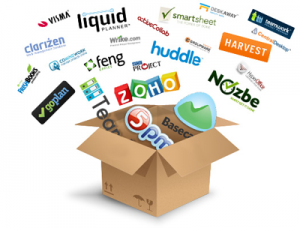Since the creation of inventory management software, many small businesses have not been able to take advantage of the expensive computer solutions available only to large corporations. But things are about to change, thanks to BrightPearl and cloud. The Internet cloud, that is.
In traditional inventory management systems, the company is required to purchase the software and install it into the specific office computers that need to use it. The cloud changes the way people can access the software, and it can support hundreds of computers simultaneously. It also can save companies money by regularly updating, without having to install new versions manually. Initial installation is low cost, and does not require highly skilled IT professionals to set up. Brightpearl currently supports Magento, eBay and eKMPowershop.com. It starts at only $99 per user each month, and there is a $120 connector fee to set up the connections to different e-commerce
channels.
The Cloud is useful in a number of ways. Real-time monitoring allows the system to update across the entire system instantly, therefore reducing the amount of error that can occur between the transfer of information from one computer to the next. Just like Google Drive, the cloud will update across offices, and will allow everyone to see the inventory purchases across divisions. The cloud even supports devices such as smart phones and tablets, so you can monitor your inventory at home, in meetings, or on the go. Departmental communication will also be increased, so everyone will know each departments demand, inventory, or when items need to be restocked or shipped. It also allows you to see where the bottleneck issues are, what the fixed orders should be, and how to calculate ROP.
Although there are many upsides to the cloud, there are also several drawbacks. Security is main concern for the use of the cloud, and is very controversial within the industry. If the system was hacked, people could see how many orders are being made, and therefore use the information to their advantage. It could also lead to a loss in IT workers, since the cloud service would handle all customer service problems and issues. IT people would no longer be of service, and many would lose their jobs. Another drawback to using an inventory monitoring system in the cloud is performance risks. According to IT specialist David Kim, “Leaving out integration issues alone, cloud-based ERP are essentially related to threatened speed, reliability of network, outage risks, and limitations on data transfer” (Kim, 2013).
Do you think BrightPearl and the cloud is a good place to monitor the entire inventory for a company, or should they stick to the original software systems? Do you think the cloud will eventually take over business computer systems, or is it too risky for companies to vitally important information like their inventory management systems in a cloud that could be hacked by outside competitors?
——
Sources: http://www.mbtmag.com/articles/2013/05/benefits-cloud-based-inventory-management-software
http://www.academia.edu/2777755/Benefits_and_Drawbacks_of_Cloud-Based_versus_Traditional_ERP_Systems
http://www.zdnet.com/cloud-services-make-inventory-management-simpler-7000015550/

 Andy Bryant, who is the chairman of Intel, has been scrambling frantically to find a new and innovative way to put the “chip” back into technology. In recent years, technology has evolved tremendously and nowadays, our society is more dependent on smaller forms of technology such as, our smart phones and our tablets. Unfortunately, this has taken a huge toll upon laptops and computers due to the fact that with smaller technology, there may no longer be a use for the computer chip.
Andy Bryant, who is the chairman of Intel, has been scrambling frantically to find a new and innovative way to put the “chip” back into technology. In recent years, technology has evolved tremendously and nowadays, our society is more dependent on smaller forms of technology such as, our smart phones and our tablets. Unfortunately, this has taken a huge toll upon laptops and computers due to the fact that with smaller technology, there may no longer be a use for the computer chip.
